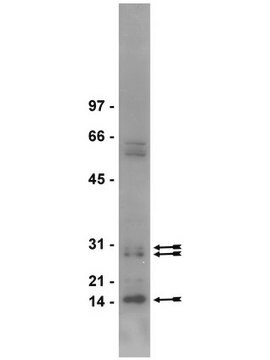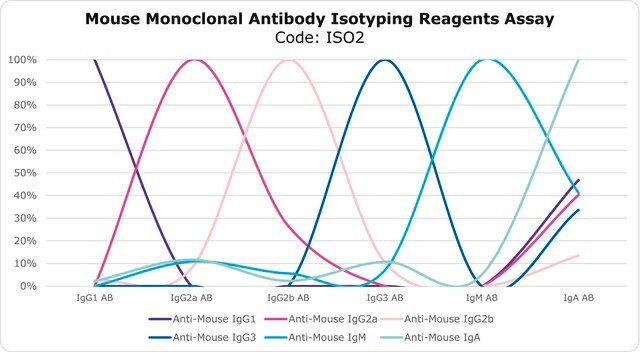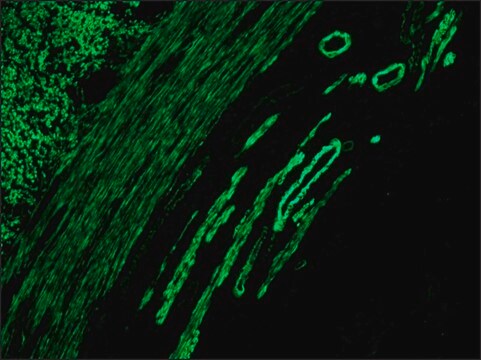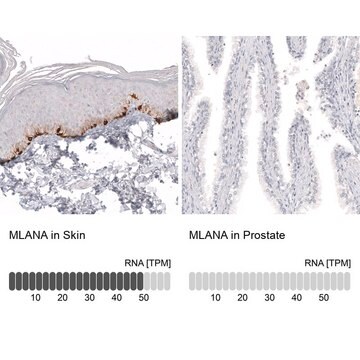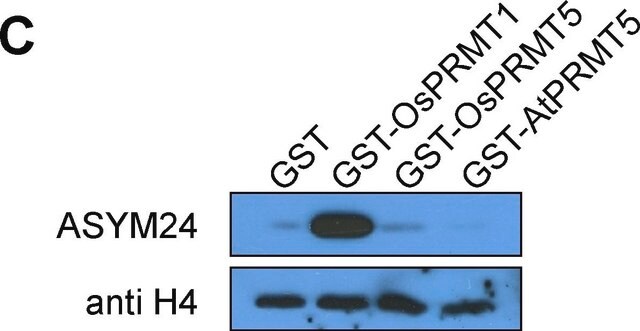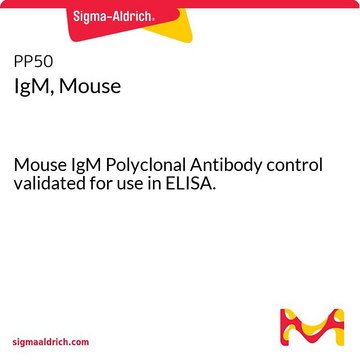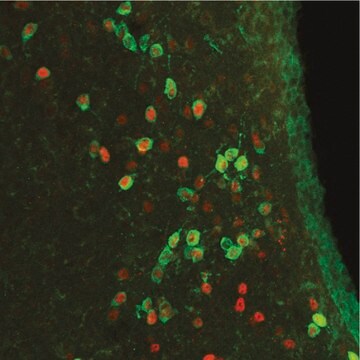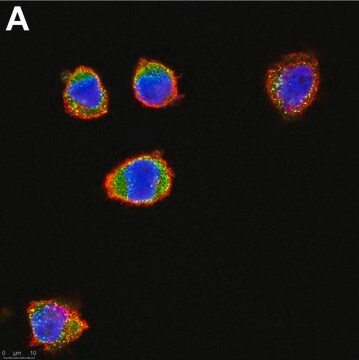MABF2793
Anti-Smith Antigen Antibody, clone Y12
About This Item
Polecane produkty
pochodzenie biologiczne
mouse
Poziom jakości
białko sprzężone
unconjugated
forma przeciwciała
purified antibody
rodzaj przeciwciała
primary antibodies
klon
Y12, monoclonal
masa cząsteczkowa
calculated mol wt 25 kDa
observed mol wt ~25 kDa
oczyszczone przez
using protein G
reaktywność gatunkowa
human, mouse
opakowanie
antibody small pack of 100 μL
metody
immunohistochemistry (formalin-fixed, paraffin-embedded sections): suitable
immunoprecipitation (IP): suitable
western blot: suitable
izotyp
IgG3κ
numer dostępu UniProt
Warunki transportu
2-8°C
docelowa modyfikacja potranslacyjna
unmodified
Opis ogólny
Specyficzność
Immunogen
Zastosowanie
Oceniane metodą Western Blotting w lizacie komórek HCT116.
Analiza Western Blotting: Rozcieńczenie 1:500 tego przeciwciała wykryło antygen Smitha w lizacie komórek HCT116.
Testowane aplikacje
Analiza Western Blotting: Rozcieńczenie 1:500 z reprezentatywnej partii wykryło antygen Smitha w lizacie komórek Caco-2.
Analiza immunocytochemiczna: Reprezentatywna partia wykryła antygen Smitha w immunocytochemii (dos Santos, N.R. et al. (1997). Hum Mol Genet. 6(9): 1549-58).
Analiza Western Blotting: Reprezentatywna partia wykryła antygen Smitha w aplikacjach Western Blotting (Naro, C. et al. (2019). Cell Rep. 26(11): 2929-2941; Somarelli, J.A., et al. (2011). Lupus. 20(3): 274-89; Brahms, H. et al. (2000). J Biol Chem. 275(22): 17122-9).
Immunoprecypitacja białka wiążącego RNA (RIP): Reprezentatywna partia wykryła antygen Smitha w aplikacjach immunoprecypitacji białek wiążących RNA (Naro, C. et al. (2019). Cell Rep. 26(11):2929-2941).
Analiza immunohistochemiczna (parafinowa): Rozcieńczenie 1:250 z reprezentatywnej partii wykryło antygen Smitha w wycinkach ludzkich tkanek migdałków.
Analiza ELISA: Reprezentatywna partia wykryła antygen Smitha w zastosowaniach ELISA (Zhou, Y, et al. (2017). J Immunol. 198(5):1846-1854).
Zastosowania immunohistochemiczne: Reprezentatywna partia wykryła antygen Smitha w zastosowaniach immunohistochemicznych (Mirra, A., et al. (2017). Sci Rep. 7(1):2033).
Analiza immunoprecypitacji: A representative lot immunoprecipitated Smith Antigen in Immunoprecipitation applications (Learner, E.A., et al. (1981). Proc Natl Acad Sci USA. 78(5):2737-41; Naro, C. et al. (2019). Cell Rep. 26(11): 2929-2941; Mirra, A., et al. (2017). Sci Rep.;7(1): 2033; Fischer, U. et al. (1997). Cell. 90(6):1023-9).
Test radioimmunologiczny: Reprezentatywna partia wykryła antygen Smitha w zastosowaniach testu radioimmunologicznego (Learner, E.A., et al. (1981). Proc Natl Acad Sci USA.;78(5):2737-41).
Analiza immunofluorescencyjna: Reprezentatywna partia wykryła antygen Smitha w zastosowaniach immunofluorescencji (Learner, E.A., et al. (1981). Proc Natl Acad Sci USA.78(5):2737-41; Mirra, A., et al. (2017). Sci Rep. 7(1):2033).
Uwaga: Rzeczywiste optymalne rozcieńczenia robocze muszą być określone przez użytkownika końcowego jako próbki, a warunki eksperymentalne mogą się różnić w zależności od użytkownika końcowego.
Postać fizyczna
Przechowywanie i stabilność
Inne uwagi
Oświadczenie o zrzeczeniu się odpowiedzialności
Nie możesz znaleźć właściwego produktu?
Wypróbuj nasz Narzędzie selektora produktów.
Kod klasy składowania
12 - Non Combustible Liquids
Klasa zagrożenia wodnego (WGK)
WGK 1
Temperatura zapłonu (°F)
Not applicable
Temperatura zapłonu (°C)
Not applicable
Certyfikaty analizy (CoA)
Poszukaj Certyfikaty analizy (CoA), wpisując numer partii/serii produktów. Numery serii i partii można znaleźć na etykiecie produktu po słowach „seria” lub „partia”.
Masz już ten produkt?
Dokumenty związane z niedawno zakupionymi produktami zostały zamieszczone w Bibliotece dokumentów.
Nasz zespół naukowców ma doświadczenie we wszystkich obszarach badań, w tym w naukach przyrodniczych, materiałoznawstwie, syntezie chemicznej, chromatografii, analityce i wielu innych dziedzinach.
Skontaktuj się z zespołem ds. pomocy technicznej